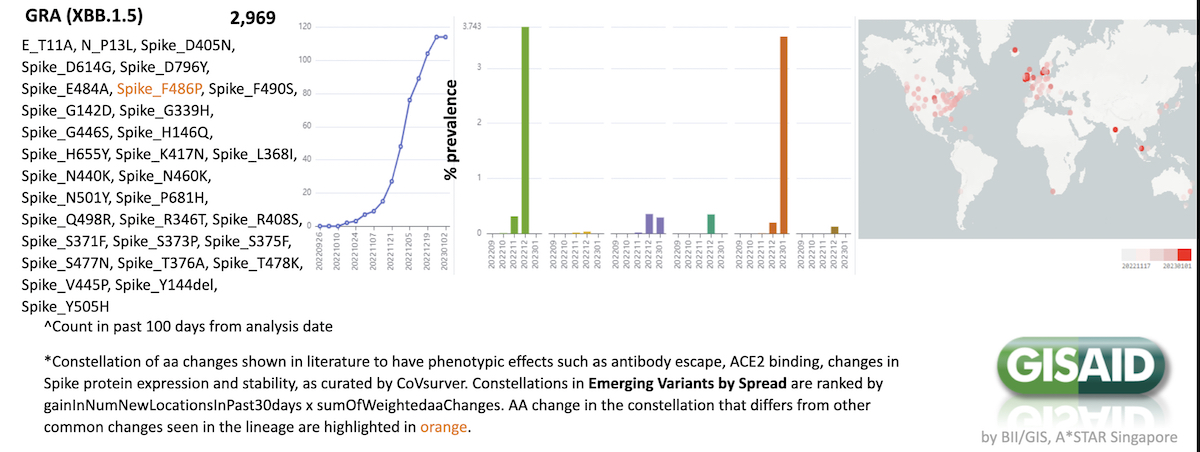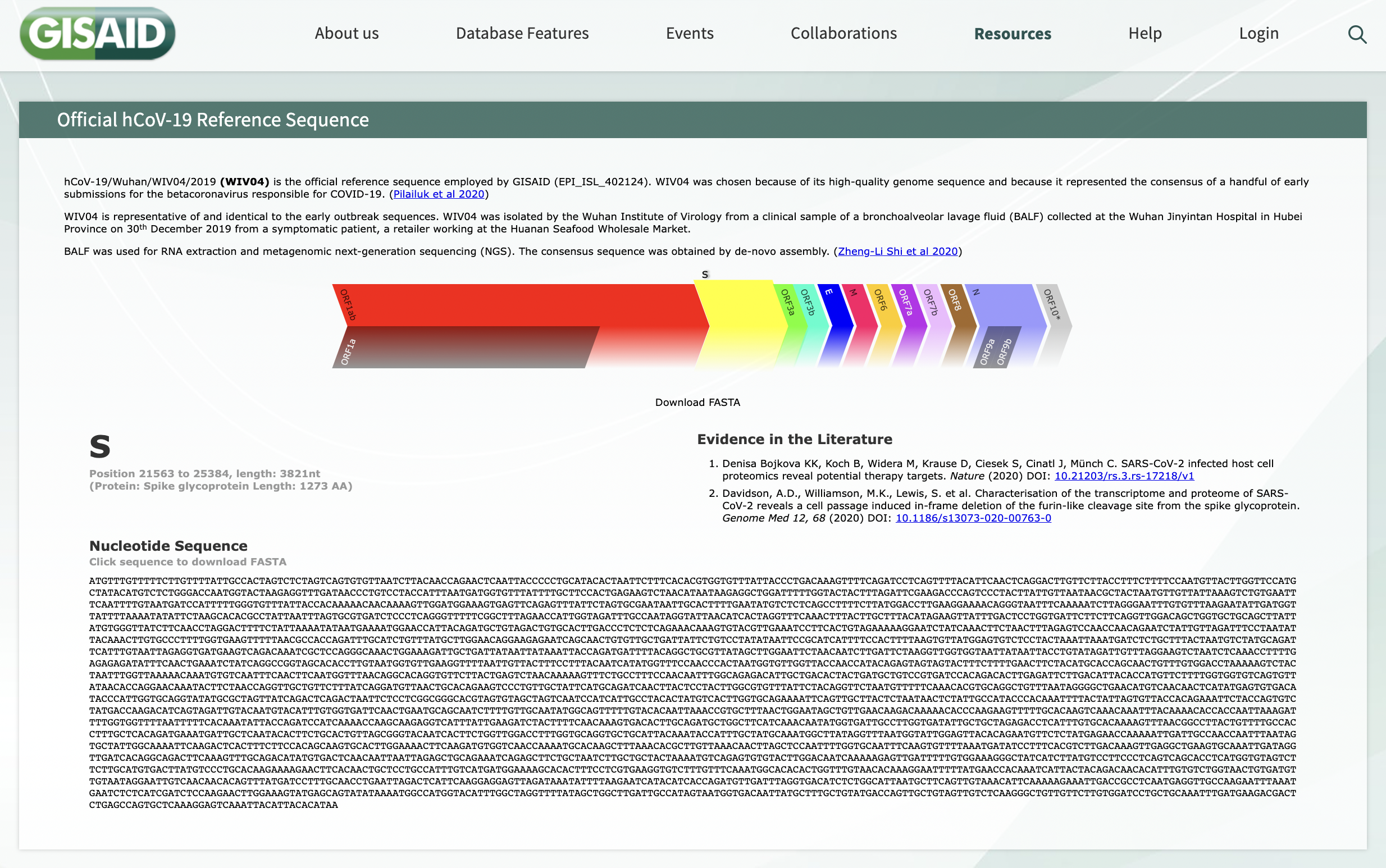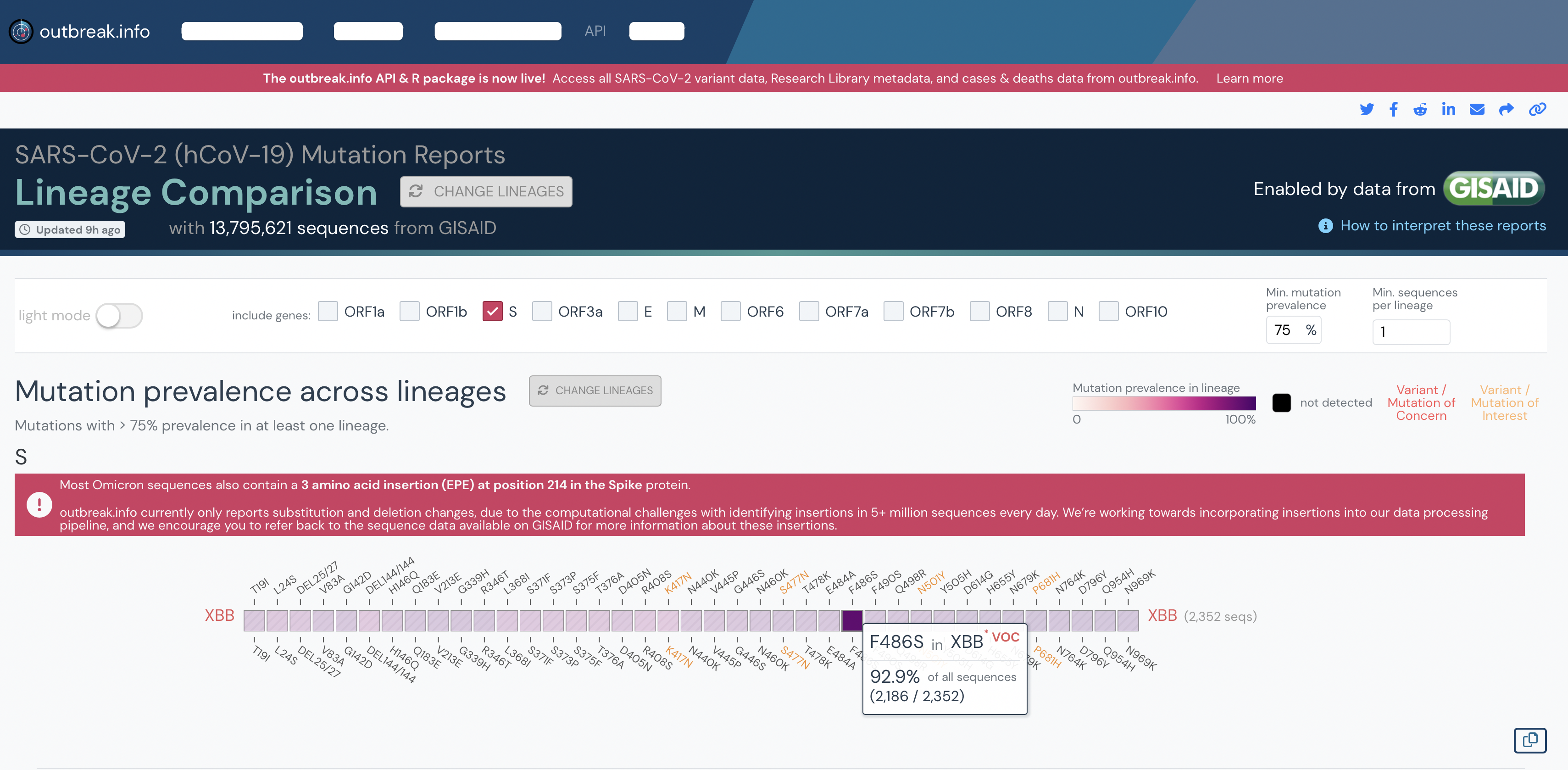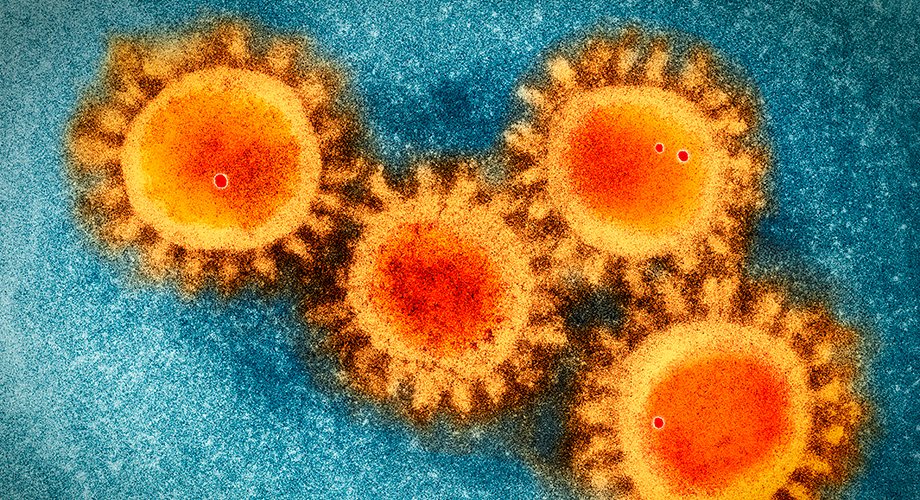
Source: https://gisaid.org/hcov-19-analysis-update/
NEWS. ECDC. 9 Jan 2023. Update on SARS-CoV-2 variants: ECDC assessment of the XBB.1.5 sub-lineage.
XBB.1.5 is a sub-lineage of the SARS-CoV-2 lineage XBB, and is currently estimated to have a large growth advantage over previously circulating lineages in North America (109%) and Europe (113%), although these estimates are associated with significant uncertainty.
- There is a risk that this variant may have an increasing effect on the number of COVID-19 cases in the EU/EEA, but not within the coming month as the variant is currently only present at very low levels in the EU/EEA.
- XBB.1.5 is a sub-lineage of XBB with an additional spike RBD mutation S486P.
- This lineage was first detected in United States (US) with the sample collection dates as of 22 October 2022, and since then the lineage has been seen increasing.
- As of 9 January 2023, 4 770 sequences have been deposited in GISAID EpiCoV belonging to XBB.1.5 with the mutational profile in Spike region – Q183E, F486P and F490S.
- Most of these submissions are from the US (4111 sequences), and the United Kingdom (202 sequences), and the variant has also been detected in several other countries, including EU/EEA countries – Austria, Belgium, Czechia, Denmark, France, Germany, Iceland, Ireland, Italy, the Netherlands, Portugal, Romania, Slovenia, Spain, and Sweden.
- The proportion of the variant in the EU/EEA is lower than 2.5% for the last two weeks of 2022 for all countries where variant proportions at this low level can be accurately estimated.
- This lineage is currently estimated to have a large growth advantage relative to previously circulating lineages in North America (109%) and Europe (113%) (estimates provided by CoV-spectrum based on data from GISAID EpiCoV), although these estimates are associated with significant uncertainty.
- The US Centers for Disease Prevention and Control (US CDC) reports a doubling time of the proportion of XBB.1.5 of 9 days and the US CDC nowcast system estimates the current proportion of the variant around 27.6% in the US (95% prediction interval 14.0-46.5%). Due to the uncertainty associated with the estimate, it is still unclear whether the variant will become dominant in the US in the coming few weeks. The rapid growth in the US does not necessarily mean that the variant will become dominant in the EU/EEA, since major differences in variant circulation between North America and Europe have been observed several times during the pandemic.
- The most likely explanation of the growth advantage is the already high level of immune escape demonstrated by XBB, combined with the effect of the spike change S486P. This mutation has previously been rare during the pandemic, probably due to it requiring two nucleotide substitutions in the same codon to change from phenylalanine to proline. In fact, other variants with this change have emerged before without becoming successful.
- A recent preprint demonstrates that XBB.1.5 is not associated with a higher reduction in neutralisation by vaccinee and convalescent sera compared to XBB.1, but that it is associated with a higher ACE2 affinity, which could indicate that the advantage of XBB.1.5 compared to XBB.1 could be caused by an increase in intrinsic transmissibility. Further laboratory and epidemiological investigations are required to elucidate the mechanism of the growth advantage conferred by this change for the XBB variant specifically. There is currently not enough information available to assess any change in infection severity associated with the variant.
- There is a risk that this variant may have an increasing effect on the number of cases of COVID-19 in the EU/EEA, but not within the coming month as the variant is currently only present at very low levels in the EU/EEA. Due to uncertainties associated with the growth rate of the variant, this assessment is associated with a high degree of uncertainty.
GISAID. SARS-CoV-2 Sequence Database Example: Spike (S)

Source: https://gisaid.org/wiv04/
XBB 1.5 Mutations Data

Source: https://outbreak.info/compare-lineages?pango=XBB&gene=S&threshold=75&nthresh=1&sub=false&dark=false
CIDRAP Report 11 January 2023
WHO weighs in on Omicron XBB.1.5 subvariant; US extends COVID health emergency – Lisa Schnirring – January 11, 2023
More than 82% of XBB.1.5 sequences are from US
The WHO said 5,288 XBB.1.5 sequences have been reported between Oct 22 and Jan 11 from 38 countries. Just over 82% are from the United States, with the United Kingdom (8.1%) and Denmark (2.2%) among other countries reporting the most sequences.
The subvariant’s genetic characteristics and growth rate estimates suggest it may contribute to rising cases. However, the WHO said its confidence in the assessment is low, given that the growth advantage estimate is just from the United States. Last week, US officials fine-tuned their assessment of XBB.1.5 proportions, showing less vigorous growth than previously thought, though spreading is still robust.
Along with BQ.1 subvariants, XBB.1.5 is one of the most immune evasive variants to date, the WHO said. So far, there is no evidence that illnesses involving the subvariant are more severe, and XBB.1.5 doesn’t carry mutations that are known to increase severity.
At a WHO briefing today, Director-General Tedros Adhanom Ghebreyesus, PhD, urged countries that experience intense transmission to increase sequencing and to share the sequencing. He said since the peak of the Omicron wave, the number of shared sequences has dropped 90% and the number of countries sharing sequences has fallen by one third.
In an update yesterday, the sequence sharing database GISAID said China continues to ramp up its genomic surveillance, with a host of genome sequences shared by provinces, cities, universities, and private labs. So far, the data suggest that the sequences from China resemble known circulating variants. New data from Shanghai show a range of known lineages from multiple separate introductions. GISAID also marked the third anniversary of its EpiCoV database, which now has 14.5 million sequences shared by 215 countries and territories.
Omicron-micrograph-NIAID

Electron microscopy of COVID-19 coronavirus – Scripps Research

